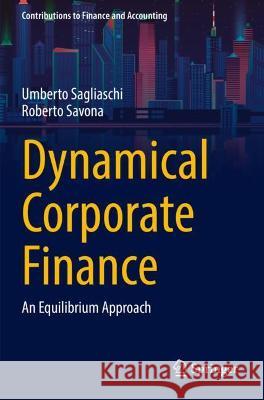Dynamical Corporate Finance: An Equilibrium Approach » książka
topmenu
Dynamical Corporate Finance: An Equilibrium Approach
ISBN-13: 9783030778552 / Angielski / Miękka / 2022
The way in which leverage and its expected dynamics impact on firm valuation is very different from what is assumed by the traditional static capital structure framework. Recent work that allows the firm to restructure its debt over time proves to be able to explain much of the observed cross-sectional and time-series variation in leverage, while static capital structure predictions do not. The purpose of this book is to re-characterize the firm’s valuation process within a dynamical capital structure environment, by drawing on a vast body of recent and more traditional theoretical insights and empirical findings on firm evaluation, also including asset pricing literature, offering a new setting in which practitioners and researchers are provided with new tools to anticipate changes in capital structure and setting prices for firm’s debt and equity accordingly.











